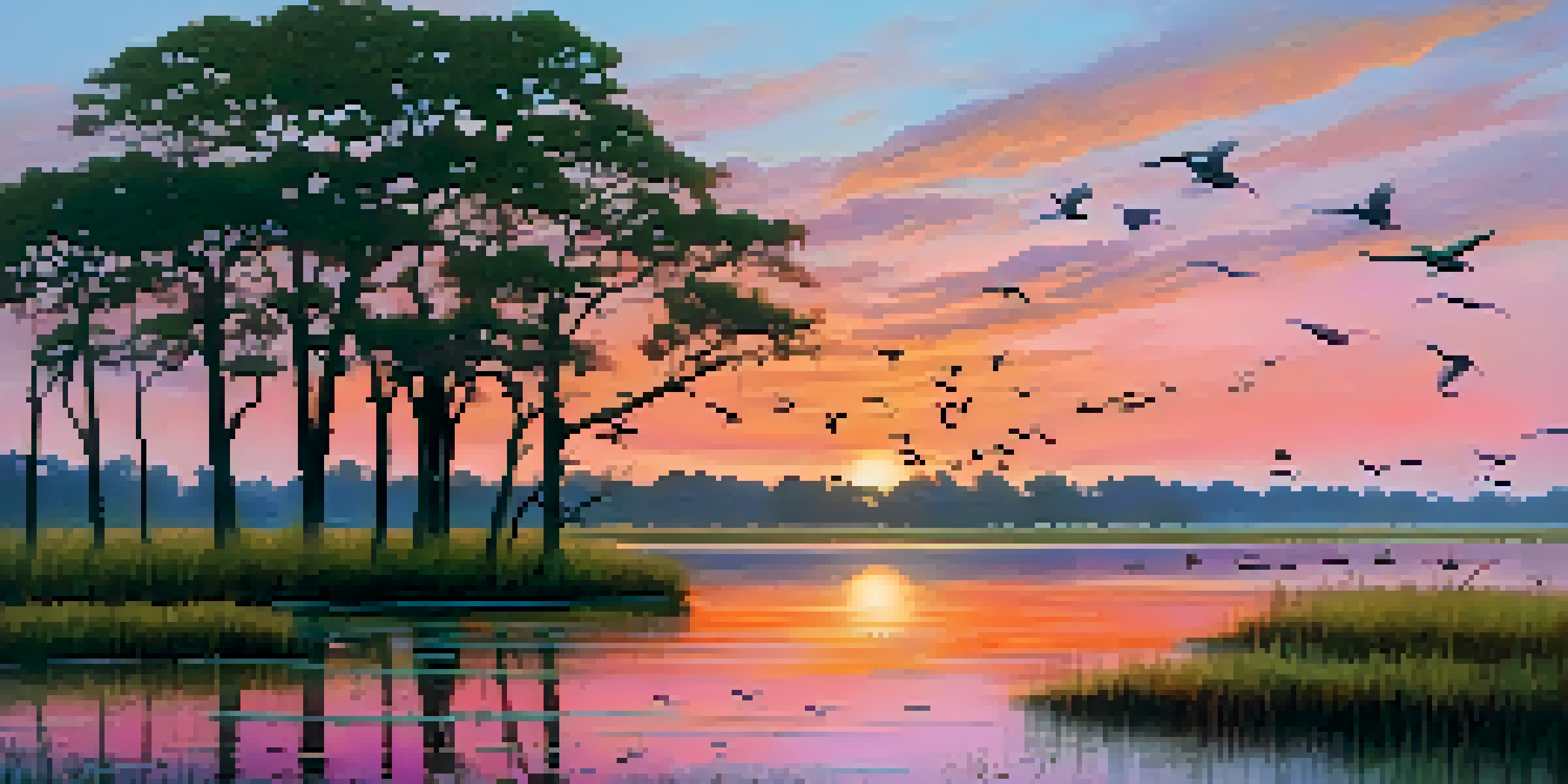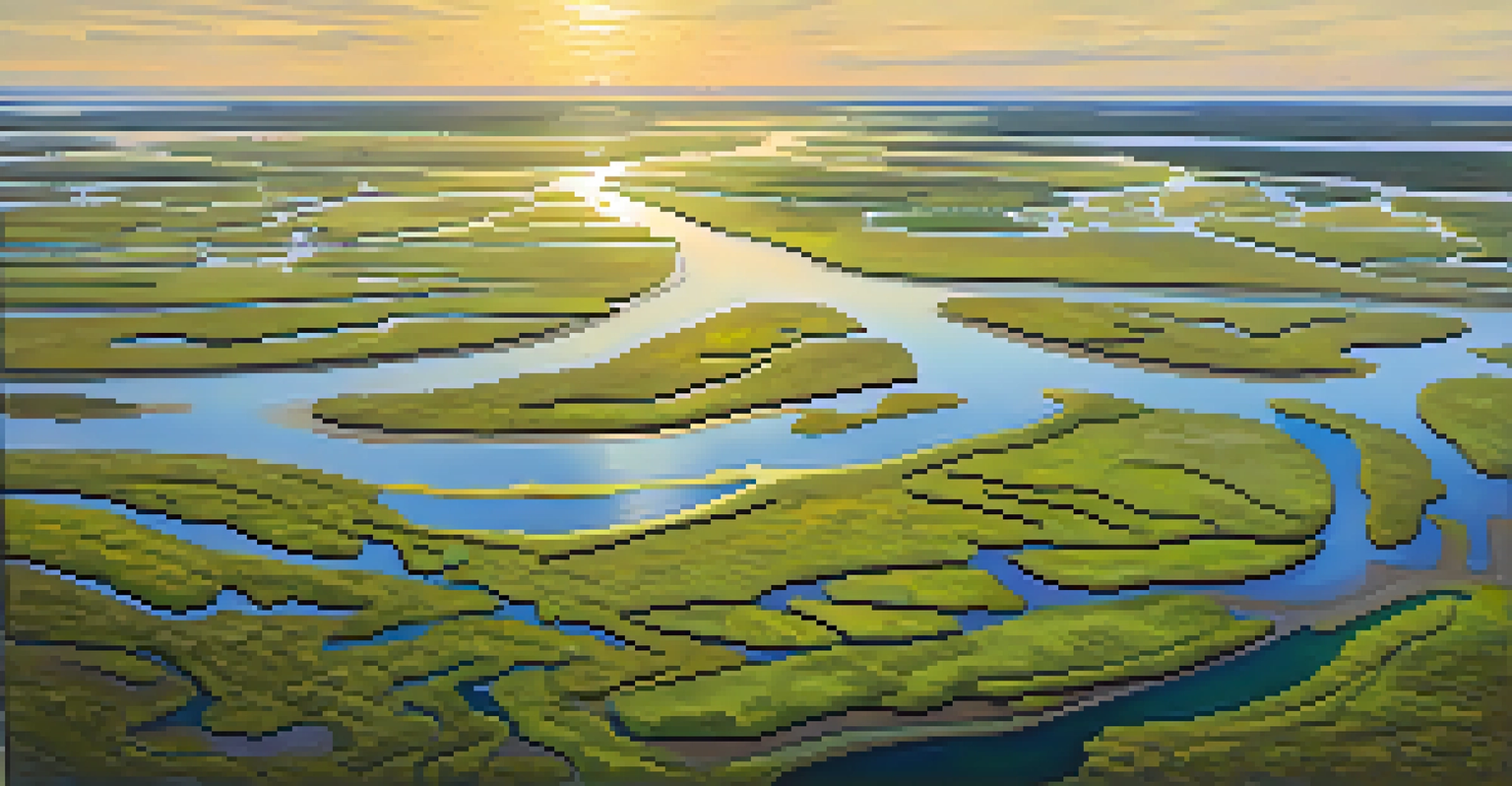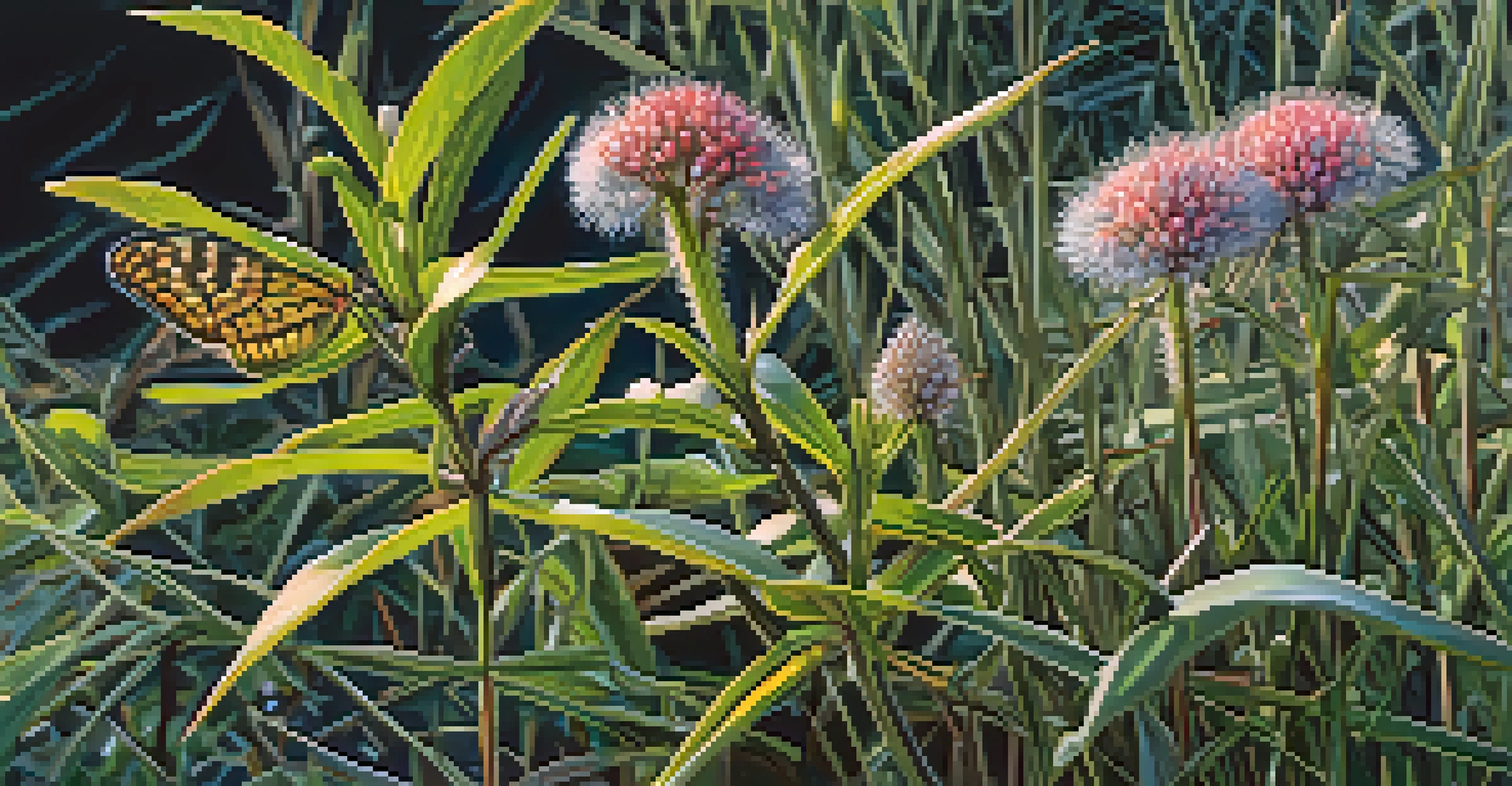Savannah's Coastal Marshlands: Conservation Efforts Explained

Understanding Savannah's Unique Coastal Marshlands
Savannah's coastal marshlands are a stunning tapestry of ecosystems that play a vital role in the environment. These marshes are characterized by their saltwater and brackish waters, which create a unique habitat for a variety of wildlife. From migratory birds to unique plant species, these wetlands are essential not just for biodiversity but also for the health of the coastal ecosystem.
The marshlands are essential not just for biodiversity but also for the health of the coastal ecosystem.
The marshlands serve as a natural buffer against storms and flooding, protecting inland areas and communities. They also act as a water filtration system, improving water quality by trapping pollutants and excess nutrients. This dual role as both habitat and protective barrier underscores the importance of conservation efforts in these delicate ecosystems.
However, these marshlands face significant threats from urban development, pollution, and climate change. Understanding their ecological importance helps us appreciate why conservation initiatives are critical for maintaining the health and sustainability of Savannah’s coastal environment.
Key Threats to the Coastal Marshlands
The coastal marshlands are under constant threat from various human activities, including industrial development and agriculture. These activities often lead to habitat destruction, which can disrupt the delicate balance of the ecosystem. Additionally, pollution from runoff can introduce harmful chemicals into the marshes, affecting water quality and wildlife health.

Climate change is another significant concern, as rising sea levels threaten to inundate large areas of marshland. This can lead to loss of habitat for many species that rely on these ecosystems for survival. Furthermore, increased storm intensity can cause more erosion and degradation of the marshlands, making conservation efforts even more urgent.
Vital Role of Coastal Marshlands
Savannah's coastal marshlands provide essential habitats for wildlife and act as protective barriers against storms and flooding.
With these challenges in mind, it’s critical to take proactive steps to protect these vital habitats. Identifying and addressing these threats is the first step towards implementing effective conservation strategies that can safeguard Savannah's coastal marshlands for future generations.
The Role of Local Communities in Conservation
Local communities play an essential role in the conservation of Savannah's coastal marshlands. Grassroots organizations often lead the charge in raising awareness about the importance of these ecosystems and advocating for sustainable practices. By involving residents in conservation efforts, communities can foster a sense of ownership and responsibility towards their natural surroundings.
Education is a powerful tool in the fight to conserve Savannah's coastal marshlands.
Community-based initiatives, such as clean-up events and educational programs, have proven effective in mobilizing individuals to take action. When people understand the impact of their actions, they are more likely to participate in preservation efforts. This not only benefits the marshlands but also strengthens community bonds through shared goals and activities.
Moreover, collaboration between local governments, non-profits, and citizens can result in comprehensive conservation plans. These plans can address specific local issues and leverage community insights for more effective strategies, ensuring that conservation efforts are both inclusive and impactful.
Government Initiatives and Policies Supporting Conservation
Government initiatives play a crucial role in the conservation of Savannah's coastal marshlands. Policies aimed at protecting wetlands often include regulations that limit development in sensitive areas. These regulations help to ensure that the ecological integrity of marshlands is maintained while balancing the needs of local communities and economies.
In addition to regulations, funding for conservation projects is vital. State and federal grants can help support research, restoration, and education initiatives that benefit the marshlands. For instance, funding may be allocated for habitat restoration projects that replant native species or create buffer zones to prevent erosion.
Community Engagement in Conservation
Local communities are key to conservation efforts, fostering ownership through initiatives that raise awareness and involve residents.
Furthermore, partnerships between government agencies and conservation organizations enhance the effectiveness of these initiatives. By collaborating, they can pool resources, share knowledge, and implement projects that have a more significant impact on preserving these vital ecosystems.
Successful Conservation Projects in Savannah
Several successful conservation projects in Savannah highlight the effectiveness of targeted efforts in preserving coastal marshlands. One notable example is the restoration of the McQueen’s Island Trail, which has reintroduced native plants and improved habitat for local wildlife. This project not only benefits the marshland ecosystem but also provides recreational opportunities for residents and visitors.
Another successful initiative is the work done by the Savannah Riverkeeper, which focuses on monitoring water quality and advocating for the protection of local waterways. Their efforts have led to increased awareness about pollution and its impact on the marshlands, resulting in community action and policy changes that promote cleaner water.
These examples demonstrate that with the right approach and community involvement, it is possible to make a tangible difference in conserving Savannah's coastal marshlands. They serve as inspiring models for future projects aimed at protecting these vital ecosystems.
The Importance of Education in Conservation Efforts
Education is a powerful tool in the fight to conserve Savannah's coastal marshlands. By raising awareness about the ecological significance of these areas, educational programs can inspire individuals to take action. Whether through school programs, community workshops, or guided nature walks, education helps to instill a sense of responsibility toward the environment.
Moreover, understanding the interconnections between human activities and marshland health can lead to more sustainable choices. For example, teaching residents about the impact of runoff can encourage practices like rain gardens and native landscaping, which help reduce pollution entering the marshes. This knowledge empowers individuals to make informed decisions that support conservation efforts.
Threats to Marshlands' Sustainability
Urban development, pollution, and climate change pose significant threats to the health and sustainability of Savannah's coastal marshlands.
Ultimately, education creates a ripple effect, where informed individuals become advocates for change within their communities. As more people recognize the value of these ecosystems, the collective effort to protect Savannah's coastal marshlands can grow stronger and more effective.
Future Prospects for Savannah's Coastal Marshlands
Looking ahead, the future of Savannah's coastal marshlands will depend largely on ongoing conservation efforts and community engagement. As climate change continues to pose challenges, adaptive management strategies will be crucial in ensuring the resilience of these ecosystems. Proactive measures, such as restoring natural habitats and protecting critical areas, can help mitigate the impacts of rising sea levels and extreme weather events.
Technological advancements also hold promise for enhancing conservation initiatives. Innovative tools like drone monitoring and remote sensing can provide valuable data to track changes in marshland health. This information can inform decision-making and improve the effectiveness of restoration efforts, ultimately leading to better outcomes for these vital ecosystems.

By fostering collaboration between government, organizations, and local communities, there is hope for a sustainable future for Savannah's coastal marshlands. Together, we can ensure that these unique ecosystems continue to thrive, supporting both wildlife and the communities that depend on them.